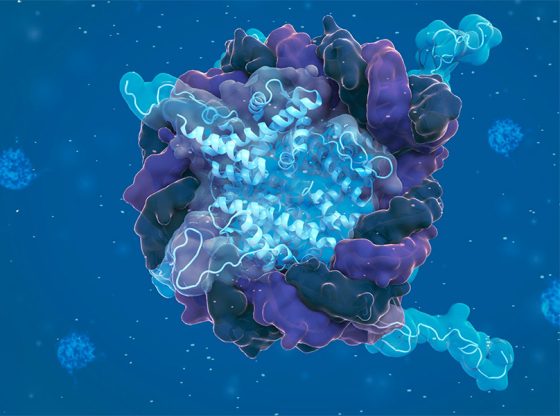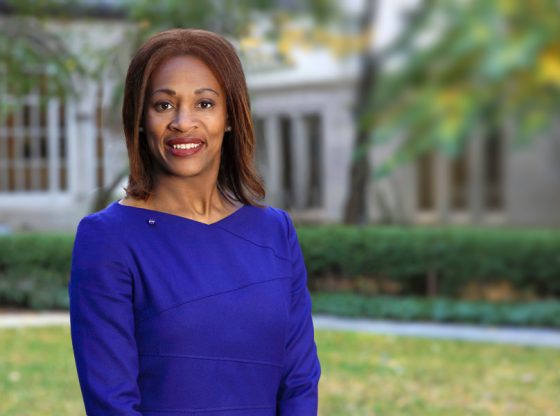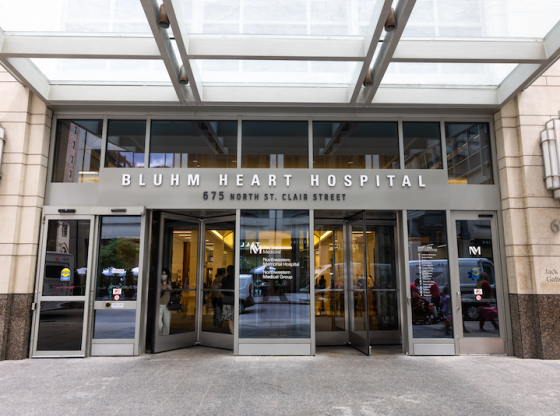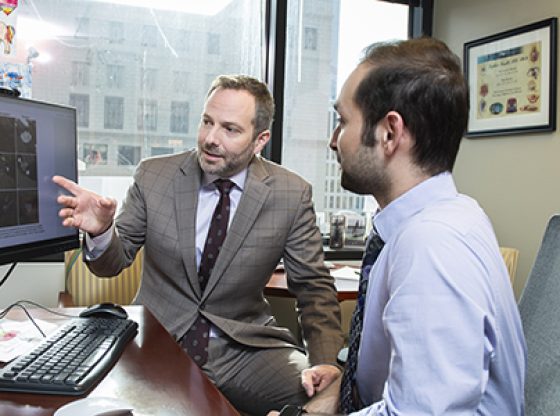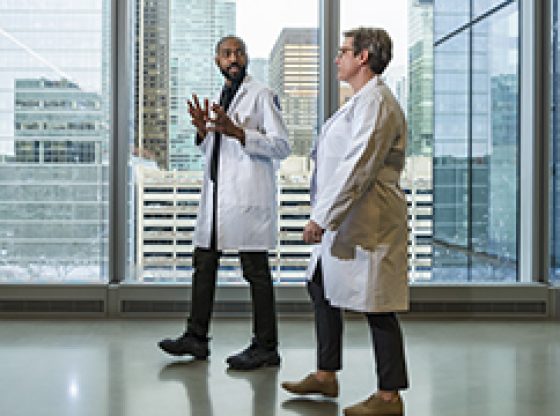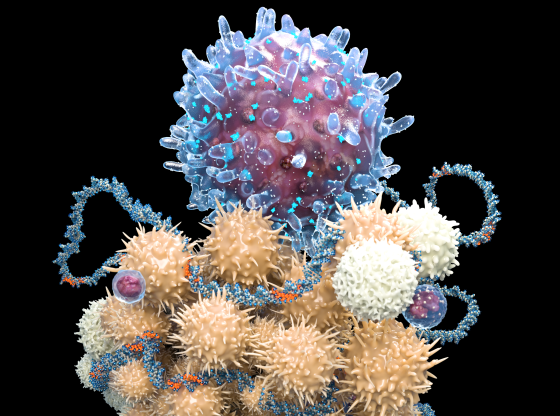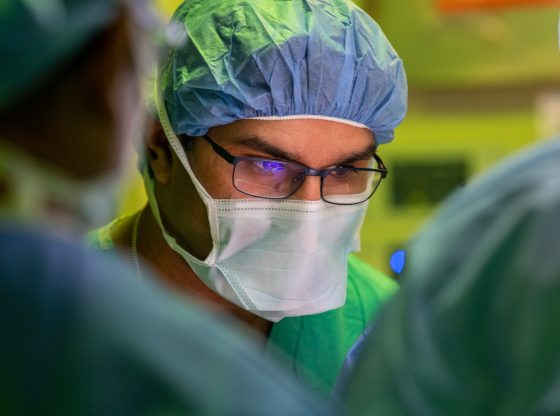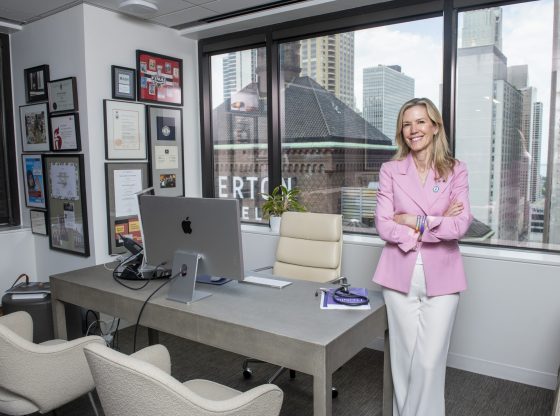Focus on Impact
As vice dean for faculty affairs, Farzaneh Sorond, MD, PhD, brings a uniquely winding career path and passion for taking care of others.
by Gina Bazer
Photography by Gr8y Productions
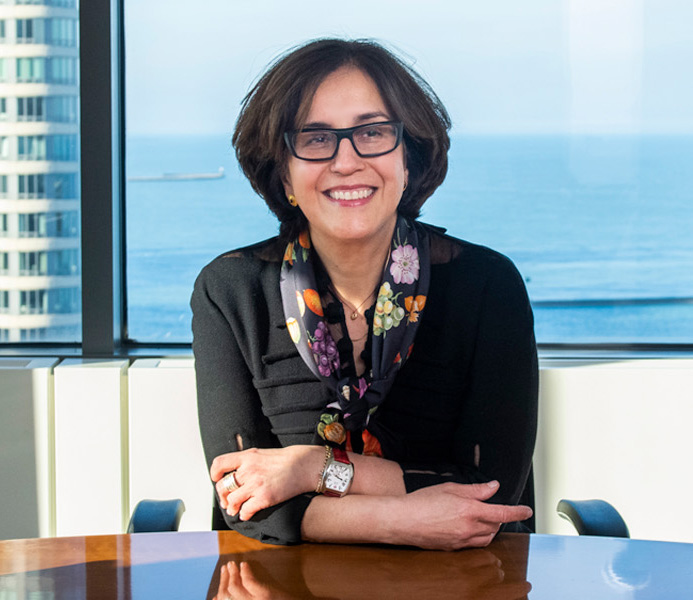
From the time she was in fifth grade, Farzaneh Sorond, MD, PhD, knew she wanted to be the most impactful type of doctor she could be. In her young mind, that meant becoming a surgeon. Becoming a neurologist was the last thing on her mind.
“My father was a neurologist, and I wanted to take a different path,” she says.
But life has a way of setting up roadblocks, and for Sorond this was certainly the case. Her career plans were thwarted by everything from political turmoil in her home country of Iran to financial constraints when she returned to the U.S.
Determined to overcome those very roadblocks, Sorond embarked on a journey that set her on the path she was meant to be on: that of a physician-scientist. Spending her summers working in various research labs helped nurture her combined passion for both clinical care and scientific research. It also became clear that nowhere was the need for scientific discovery greater than in the neurosciences.
She came to realize something that her younger self was too naïve to understand — there is more than one way to be impactful in medicine. Today, she couldn’t be happier with her decision to pursue her clinical training in vascular neurology and neurocritical care.
In her long career as a clinician, scientist, and administrator, Sorond, who is the Dean Richard H. Young and Ellen Stearns Young Professor and chief of Stroke and Vascular Neurology, has made tremendous impact. Now, she will bring her varied professional and life experiences to her new role of vice dean for faculty affairs, advocating for faculty at all levels. Additionally, she will direct the new Simpson Querrey Center for Neurovascular Sciences.
“There is nowhere else in the world where I can imagine having the opportunity to do what I do,” she says. “The openness, thoughtfulness, and willingness to care at Feinberg is unlike any other place.”
The rewards of perseverance
Sorond was born in Iran and came to the U.S. at the age of 8 with her family for her father’s career, which found her moving from Cleveland, Ohio, to Ann Arbor and Royal Oak, Michigan, where she stayed until 8th grade. The constant change instilled in her a sense of resilience and grit.
“My brother and I didn’t speak English,” she remembers. “Our first summer in America, we spent with nuns at the Catholic hospital where my father was an intern. They couldn’t pronounce our names, so my brother became Bobby, and I became Fran.”
In 1978, the family moved back to Iran. The Shah of Iran was building a vast academic healthcare system, and her father was recruited as the chair of Neurology. Sorond and her siblings enrolled at the Tehran Community School. What began as a relatively smooth transition soon turned turbulent. The Iranian Revolution of February 1979 resulted in a complete upheaval of the education system. By the time Sorond graduated from an international school cobbled together by the expat community, the country was at war with Iraq, and the Iranian government shut down all universities and closed its borders.
“So, I spent two years just puttering around Iran, trying to learn what I could,” Sorond says. Eventually, the borders re-opened, and Sorond made her way to India, where she could apply for a U.S. visa, and by 1984, she was finally back on track. Even though the financial constraints of getting money to the U.S. from Iran posed significant challenges during her undergraduate years, she managed to graduate summa cum laude from University of Houston with a dual degree in biochemistry and biophysics, and in the fall of 1989, she started in the Medical Scientist Training Program (MSTP) at Baylor College of Medicine.
Adapting dreams to reality
With an undergraduate degree in biophysics, Sorond found herself drawn to cardiovascular physiology and studied voltage-gated potassium channels for her thesis. Her thesis advisor, who was a cardiologist, had naturally veered her toward a career in cardiac electrophysiology. But there was another twist in her path. Sorond signed up for a sub-internship in cardiology. At the end of the rotation, the attending’s feedback came as a surprise.
“He told me, ‘I’m sure you’d be a great cardiologist, but if you really want to be a physician-scientist and continue as a researcher, you should go talk to my wife,’” Sorond recalls. He introduced Sorond to his wife, a prominent pediatric neurologist at Baylor, who was profoundly convincing. “We’re just starting to learn about the brain,” the neurologist had said. “How could you not want to be a part of this?”
More time passed; more mentoring meetings and soul-searching followed. Sorond had also enjoyed her neurology rotation — especially because her father was visiting the U.S. during that same period, and they would often discuss cases in the evenings — so neurology was no longer out.
The decision was made. After completing the MSTP at Baylor, Sorond went on to Harvard Medical School for her neurology residency, followed by a fellowship in the emerging fields of vascular neurology and neurocritical care. It turned out that an interest in physiology, the vascular system, and neurology were not mutually exclusive.
“Drawing from cardiology, I saw many similarities in neurovascular disorders. There are acute ischemic strokes that are very similar to heart attacks, but there is also this slower process of ischemic injury that leads to global brain failure, analogous to what happens in heart failure,” she says. “This slow accumulation of vascular injury in our brains, which happens more in people who have vascular risk factors like hypertension, smoking, and obesity, results in neurovascular degeneration across the lifespan.”
Sorond, who joined the faculty of Harvard Medical School in 2001, became fascinated with mechanisms that linked this gradual neurovascular degenerative process to cognitive impairment and dementia. But it wasn’t exactly a burgeoning area of neurological study at the time. The focus in the early 2000s had been on Alzheimer’s disease and the amyloid connection, not vascular brain injury. Nevertheless, Sorond was still able to gain funding for her research and study this subacute neurovascular process in her lab, while providing care for acute neurovascular patients in the Neuro ICU — the best of both worlds, just as she wanted.
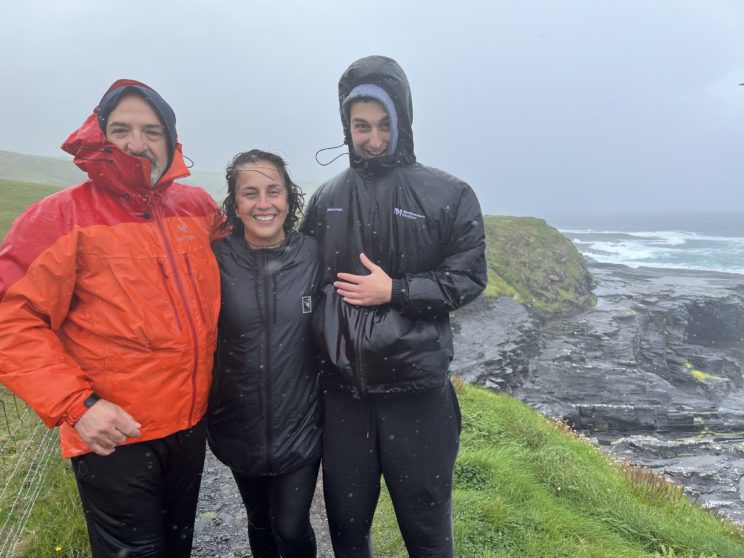
Then, in 2012, the tide shifted.
“All of a sudden, the first of the anti-amyloid drugs coming out were failing,” Sorond says. “The community was starting to step back and say, ‘Amyloid may not be the whole story. There’s clearly a vascular component to this.’ A huge influx of NIH funding was earmarked to study vascular contributions to cognitive impairment and dementia. It’s still one of the biggest areas of federal support today.”
Sorond went on to publish her work in a range of high-impact journals, such as Stroke, Circulation, Alzheimer’s & Dementia, and PNAS. Busy with her research, clinical work, and growing family (in 2003, Sorond and her husband Soad Kousheshi, an engineer, had their son Shahab, who is now a sophomore at Northwestern), the physician-scientist was content. Yet, she knew there was another way that she could make an impact, and it was outside the lab and doctor’s office.
Putting people first
With her career in full swing, Sorond started thinking about the art of mentoring.
“It came from some of the challenges that I experienced across my career development journey,” she explains. “It’s not that people weren’t there to help me. But I felt like the approaches to mentoring were limited to what was ‘traditional’ and ‘how I did it.’ If we want to facilitate career development in academic medicine, we need to think outside the box and create more innovative opportunities for the next generation — to not be so dogmatic in the way careers are built.”
Around this time, a fellow resident at Harvard, Dimitri Krainc, MD, PhD, the Aaron Montgomery Ward Professor of Neurology, who had become the chair of the Ken and Ruth Davee Department of Neurology at Feinberg in 2013, began a conversation with Sorond about the opportunities in his new academic home. He encouraged Sorond to join, highlighting the areas that interested her the most: growing a vascular neurology research program and promoting mentoring and faculty development in the department. The dialogue continued until 2015, when Sorond felt she and her family were ready.
“I thought, let’s give it a chance,” she says. “I wasn’t going to change my research; I wasn’t going be a different clinician. For me, it was the possibility of impacting faculty that was the draw.”
Sorond started at Northwestern as professor and vice chair for faculty development in Neurology, then became the associate dean for faculty development for the medical school in 2019, working closely with then-vice dean for faculty affairs, William Lowe, Jr., MD, the Thomas D. Spies Professor of Genetic Metabolism and professor of Medicine in the Division of Endocrinology, Metabolism and Molecular Medicine. When Lowe stepped down last September, Sorond succeeded him.
Sorond has frequently said that her priority is to “implement programs and policies that foster equity and entrepreneurial opportunities for faculty at all levels and across all tracks with the goal of elevating scientific discoveries and healthcare delivery.”
Ultimately, it comes down to caring about people.
“No school or hospital can survive without physicians. No scientific program can survive without scientists. If they are not thriving, the academic health system cannot do well. As leaders, we should embody that understanding in everything we do, every day,” she says. “We have to stop constantly looking for new ways to make traditional perspectives and situations work and really step back to understand the challenges and motivations of today’s clinicians and scientists, so that we can better help them be successful. I don’t know if faculty feel that they’re valued in that way. I hope they do. But my goal is to make sure they know they are.”

